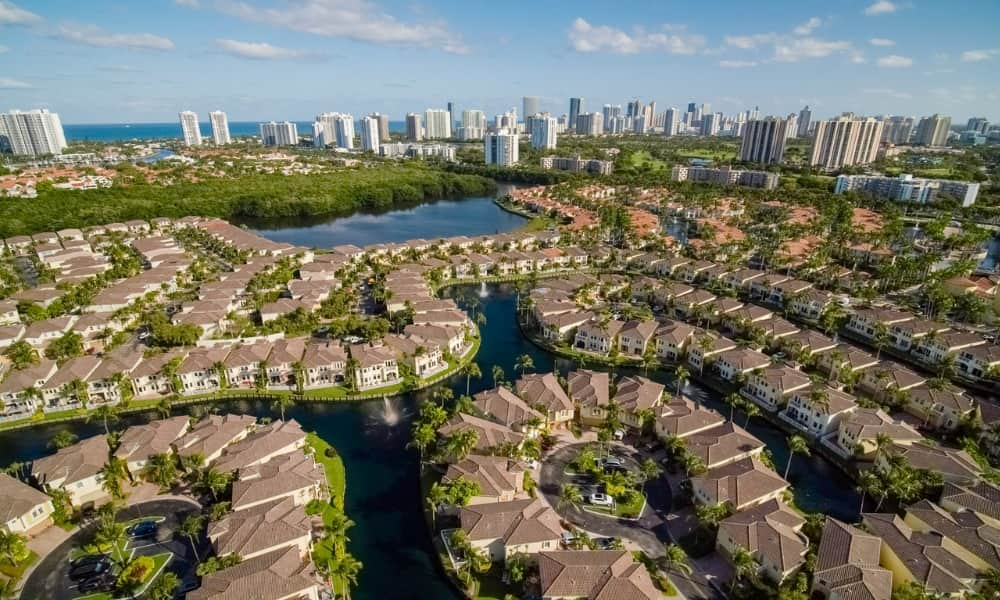Homeowners premiums are on the rise, but there are ways to keep your costs down.
Key takeaways:
- Florida homeowners insurance rates are steadily increasing
- The volume of claims is putting pressure on insurers
- Flood insurance is now mandatory for many homeowners
The Florida insurance industry is in the midst of a challenging time. Rates have risen sharply, which has caused many residents to move to the state-run provider, Citizens Property Insurance Corporation, which, in turn, has struggled to keep up with the demand. Many residents will also be required to purchase flood insurance over the next few years, driving up costs even more.
In this article, we’ll walk through the current trends in Florida’s home insurance market and how they will affect consumers.
Residents will pay more
Home insurance premiums in Florida are predicted to increase by as much as 40% this year. This despite a round of reforms passed by state lawmakers at the end of 2022 meant to ease financial pressures in the local insurance market. According to the Property Insurance Stability Report released by Florida’s Office of Insurance Regulation in January, Broward and Miami-Dade counties, which already had the highest average rates in the state, were expected to see them rise even higher.
One homeowner’s premium shot up by more than $5,000 last December, more than doubling his monthly bill. Not all policyholders will see that level of increase, of course. But those in higher-risk areas (those prone to flooding) will see big jumps, while those in lower-risk regions will pay below-average rates.
Changes are coming to the state-run insurer
As part of the legislature’s overhaul, Citizens Property Insurance will be able to reduce the number of policies it has to fulfill. This after its policy load grew by 50% last year, reaching just over 1,153,000 policies and $2.8 billion in underwriting expenses paid out for claims and litigation. The agency expects to hit nearly 1.7 million policies by the end of this year – $5.1 billion in premium volume – the highest amount ever in its 20-year history.
Just a few short years ago, the situation was quite different. Prior to 2020, Citizens averaged approximately 400,000 policyholders a year. That’s when many private insurers began going insolvent or left the state entirely due to a steady increase in litigation, going against the nationwide uptick in private insurers entering the market. The reforms enacted by the legislature are meant to reverse this trend, including the following changes:
- Homeowners will be required to accept a takeout offer from a private insurer as long as the rate is no more than 20% above Citizens’ rate.
- Citizens’ residential policyholders will now be required to buy flood insurance. This provision will be phased in based on where they live.
- Starting in November, there will be no decreases in price and prices can increase up to 50% above the previous year’s rates.
There have been some criticisms of these reforms, specifically that homeowners may end up paying more despite the financial relief given to insurance companies.
New claims resolution process
Claims resolution is a time-consuming, expensive process for insurers. The state legislature attempted to provide some relief with the following changes:
- Homeowners must file a claim within a year and reopen existing claims within 18 months.
- Insurers have to respond to claims faster, acknowledging them within a week, conducting inspections in 30 days, and paying losses within 60 days.
- Initial damage assessments can be done remotely with digital photos and videos.
- In exchange for cheaper premiums, insurers can mandate that policyholders agree to binding arbitration rather than litigation.
The tide of lawsuits that these reforms are attempting to slow is significant. In 2021, Florida saw over 100,000 lawsuits with claims of $7.8 billion in damages. This compared to the 24,000 cases with claims of $2.4 billion filed in the other 49 states combined.
Less incentive to litigate
One of the main reasons Florida insurers find themselves in a dire financial position is the cost of past litigation. And more is probably coming in the wake of damage caused by Hurricanes Ian and Nicole. But new legislation aims to reduce the effects of litigation. It gets rid of a provision that mandated insurance companies to pay homeowners’ attorneys’ fees. Now, each side pays its own legal bills.
Mandatory flood insurance
As mentioned briefly above, Citizens’ policyholders will soon have to buy flood insurance from the National Flood Insurance Program. It’s required for highly valued properties by 2024, and for all other properties by 2027, whether or not they live in a flood plain. The hope is that this extra coverage may decrease the number of claims filed with Citizens, particularly after a serious storm.
Only 18% of Florida homeowners had flood insurance prior to Hurricane Ian last September. While that’s higher than most other states, there’s still a huge number of homeowners without it. Starting in April of this year, flood insurance will be required for new customers in Special Flood Hazard Areas (SFHAs) and these requirements will continue to phase in until January of 2027.
More reinsurance coverage
One billion dollars of the state’s record surplus will be used to create the Florida Optional Reinsurance Assistance Program (FORA) to help steady the property insurance market. This is in addition to the Reinsurance to Assist Policyholders (RAP) program, also established in 2022. Both of these programs allow insurers to transfer some of their risk to other insurers, helping them to meet their financial obligations.
It pays to have a partner
The Florida insurance landscape is more complex and challenging than ever, so it only makes sense to work with a knowledgeable insurance company that can help you navigate the red tape and find a competitive rate. NICRIS Insurance stands ready to assist you, no matter where you live. Schedule an appointment with our team today to learn more.

